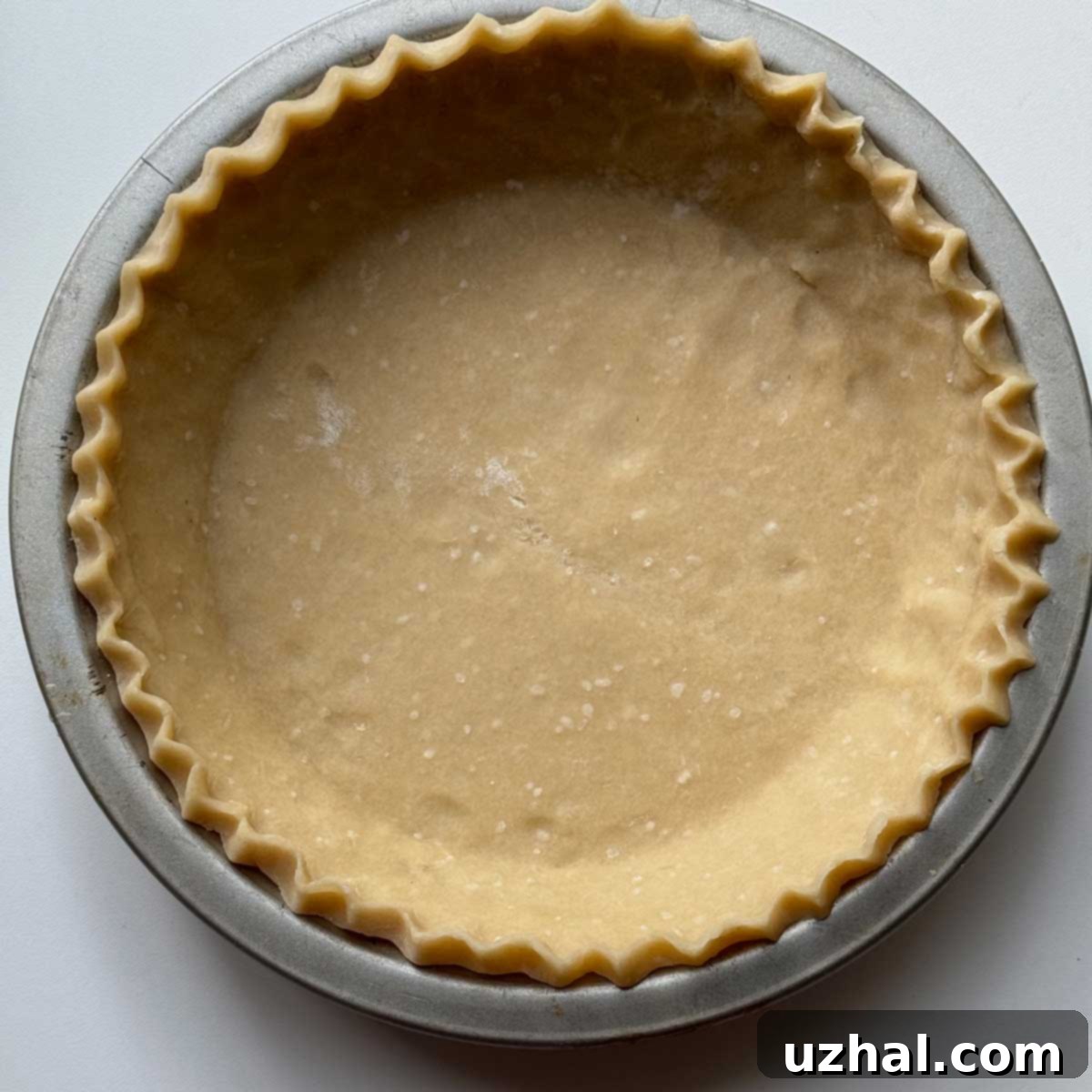The Ultimate Guide to Perfect Pie Crusts: Flaky, Buttery, and Easy Recipes
A truly exceptional pie begins with an extraordinary crust. While the filling often gets all the glory, it’s the foundation of a perfectly flaky, tender, and flavorful crust that elevates a good pie to an unforgettable dessert. Many bakers consider pie crust making an art form, but with the right recipe and a few key techniques, anyone can achieve delicious results. When a friend recently asked for my go-to pie crust recipes, I realized it’s impossible to pick just one! Different pies call for different crusts, and personal preference plays a huge role.
This comprehensive guide dives into my top picks for pie crust recipes, covering a range of options from classic butter-shortening combinations to rich all-butter varieties and even reliable all-shortening bases. For the most part, these recipes are incredibly reliable and surprisingly easy to work with, making them suitable for both novice and experienced bakers alike. Whether you’re aiming for a rustic galette, a delicate tart, or a robust fruit pie, you’ll find a crust recipe here that fits the bill. Generally, I lean towards all-butter crusts for single-crust pies, especially for elegant galettes and tarts where the butter’s rich flavor can truly shine. For hearty fruit pies that require a sturdy yet flaky base, I often opt for butter and shortening combos, striking a balance between flavor and workability.
Beyond the recipes, we’ll explore essential tips and tricks that apply to almost any pie crust, ensuring your baking endeavors are met with success. From understanding the role of cold ingredients to mastering the art of not overworking your dough, these insights will help you create pie crusts that are consistently tender, flaky, and a joy to eat. Let’s embark on this delicious journey to discover your new favorite pie crust!
General Principles for a Perfect Pie Crust
Before we dive into specific recipes, understanding a few fundamental rules will dramatically improve your pie crust success:
- Keep Ingredients Cold: This is perhaps the most crucial rule. Cold butter or shortening creates pockets of fat within the dough. As the pie bakes, these fat pockets release steam, pushing apart the layers of dough and resulting in that coveted flaky texture. Warm fat melts into the flour too readily, leading to a tough or crumbly crust. Use ice-cold water and even consider chilling your flour and mixing bowl if your kitchen is warm.
- Don’t Overwork the Dough: Over-mixing or over-handling pie dough develops the gluten in the flour, making the crust tough rather than tender. Mix just until the ingredients are combined and the dough barely comes together. Visible pieces of fat are a good sign!
- Allow for Resting Time: Once your dough is formed, it’s essential to let it rest in the refrigerator for at least 30 minutes, or preferably an hour or two. This allows the gluten to relax, making the dough easier to roll out without shrinking. It also gives the fat a chance to firm up again.
- Use the Right Tools: While a food processor can make quick work of cutting in fat, it’s easy to overmix. A pastry blender, two knives, or even your fingertips can achieve excellent results, allowing more control over the texture. If using a food processor, pulse in short bursts.
- Mind Your Water: Add water gradually, a tablespoon at a time, until the dough just comes together. Too much water makes the dough sticky and tough; too little will make it dry and crumbly. The exact amount can vary based on flour type, humidity, and fat content.
Butter & Shortening Combo Crusts: The Best of Both Worlds
The combination of butter and shortening in a pie crust offers a fantastic balance. Butter provides rich, incomparable flavor, while shortening contributes to a supremely tender and flaky texture that’s often easier to work with, especially for double-crust pies. This blend creates a crust that stands up well to juicy fruit fillings and offers an appealing golden-brown finish.
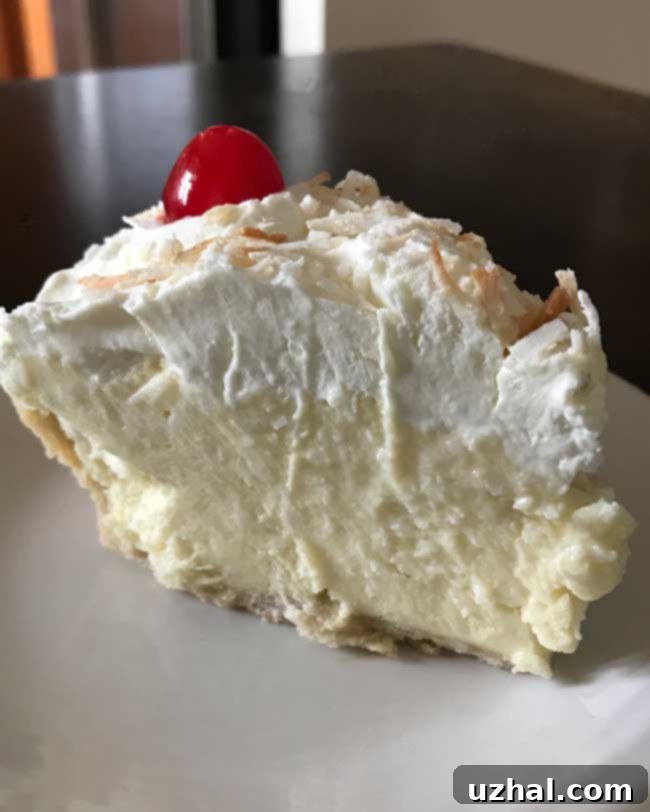
Baked Flaky Pie Crust: My Go-To for Ultimate Flakiness
This particular flaky pie crust recipe has firmly established itself as my absolute favorite. It masterfully combines the best attributes of both butter and shortening. With a higher proportion of butter, it delivers a deeply satisfying flavor profile, while the touch of shortening ensures an incredibly flaky and tender crumb. The balance struck here is truly remarkable, making it versatile enough for virtually any pie you can imagine, from sweet fruit pies to savory quiches. The recipe also thoughtfully includes detailed instructions on how to blind bake the crust, a crucial step for custard pies, quiches, and any pie where a pre-baked crust is essential to prevent a soggy bottom. Its ease of handling and consistent results make it a staple in my kitchen, perfect for a wide range of baking projects where a reliable and delicious crust is paramount.
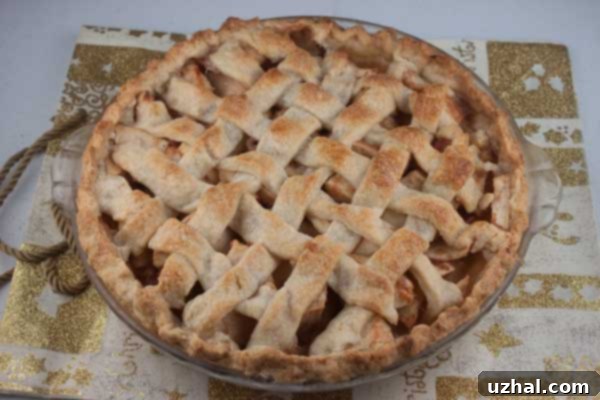
Buttermilk Pie Crust: For Added Tenderness and Tang
The Buttermilk Pie Crust is another stellar option that often gets overlooked, even by myself! This recipe truly stands out for its unique flavor and exceptionally tender texture. Both the butter and the buttermilk contribute significantly to its rich, slightly tangy taste, adding a depth that plain water simply can’t achieve. The buttermilk also helps tenderize the dough, thanks to its mild acidity. The inclusion of shortening works synergistically with the butter and buttermilk to guarantee a wonderfully flaky result. While it’s moderately easy to work with, its distinct characteristics make it particularly well-suited for pies that benefit from a subtle tang and a very tender crust, such as fruit pies with sweet fillings or even some savory applications. Don’t let this gem slip your mind – it’s definitely worth remembering for your next baking adventure!

Basic Unbaked Crust: A Reliable Foundation
For those moments when simplicity and reliability are key, this basic unbaked crust recipe is my steady reference. Lately, I’ve found myself continually turning back to its straightforward approach and the helpful guidance provided in the accompanying chart. This recipe leans predominantly on butter for flavor, incorporating just two tablespoons of shortening to boost its workability and flakiness without compromising the buttery taste. It’s a fantastic choice for both single and double-crust pies where blind baking isn’t required, allowing the crust to cook fully with its filling. Remember to use the suggested amounts of water as a guideline, but always be prepared to add a little more, drop by drop, if the dough feels too dry and crumbly to come together. The goal is a cohesive, pliable dough that isn’t sticky, ensuring easy rolling and a beautifully textured final product. This basic recipe serves as an excellent foundation for any aspiring pie baker.
All-Butter Pie Crusts: The Epitome of Flavor
For many, an all-butter pie crust is the gold standard. It delivers an unparalleled rich, nuanced flavor and a crisp, tender texture that is simply divine. While sometimes a bit more temperamental to work with than shortening or combo crusts, the results are undeniably worth the effort. The secret to a perfect all-butter crust lies in meticulous attention to temperature and handling.

1-2-3 Butter Crust: Simplicity Meets Superior Flavor
The 1-2-3 butter crust is a classic for a reason, lauded for its straightforward ratio and incredible results. Derived from the traditional 1-2-3 crust principle, it roughly translates to a recipe with 2 parts liquid (like 2 ounces of ice water), 4 parts fat (4 ounces of cold butter), and 6 parts flour (6 ounces of all-purpose flour). This simple ratio makes it easy to scale up or down as needed. The key to truly mastering an all-butter crust like this lies in several critical steps:
- Do Not Overwork It: As butter has a lower melting point than shortening, overworking the dough can quickly lead to a tough crust. Handle it minimally, just enough to bring it together.
- Rest the Dough: Allowing the dough to rest in the refrigerator for at least 30 minutes, and ideally longer, is crucial. This helps the gluten relax, preventing shrinkage during baking, and firms up the butter pieces.
- Rest Again After Lining: Once you’ve rolled out the dough and lined your pie pan, give it another 15-30 minute chill in the fridge. This second rest is vital for preventing the crust from shrinking down the sides of the pan as it bakes.
- Quality Butter Matters: The type of butter you use can make a noticeable difference. High-quality, higher-fat butters such as Plugrá or Kerrygold Irish Butter contribute to a richer flavor and often yield a more tender, flakier crust. Their lower water content can also make the dough slightly easier to handle.
- Very Cold Ingredients: This point cannot be stressed enough. Ensure your butter is ice-cold, your water is ice water, and some bakers even go so far as to freeze the blade of their food processor or chill their mixing bowl to maintain a low temperature throughout the mixing process. This maximizes flakiness by creating distinct layers of butter that steam when baked.
Following these guidelines will help you achieve a consistently delicious, flaky, and buttery all-butter pie crust every time.
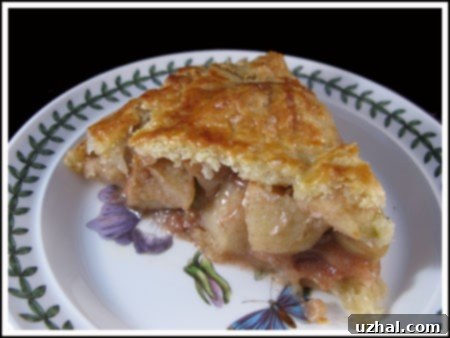
European All-Butter Crust for Fruit Pies: A True Flavor Sensation
When it comes to an all-butter crust that delivers an unbelievably rich flavor and tender texture, the crust used for my Prize-Winning Apple Pie is simply amazing. This European-style butter crust is designed to bake perfectly alongside its fruit filling, resulting in a cohesive and deeply flavored pie experience. However, it’s crucial to note a specific characteristic of this particular crust: it truly excels when it is not blind-baked. The high butter content, while contributing immensely to its flavor and tenderness, can lead to issues if pre-baked without a filling. If you attempt to blind bake it, the butter tends to melt and pool significantly, potentially making the crust greasy or uneven. Therefore, this crust is ideally suited for pies where the filling is added before baking, allowing the butter to render beautifully into the dough as it bakes, creating an incredibly rich and flaky foundation that perfectly complements a juicy fruit filling. Its robust flavor and tender crumb make it a true showstopper for your next apple or berry pie.
All-Shortening Crusts: The Flakiest and Easiest to Handle
While butter brings flavor, shortening is king when it comes to creating an exceptionally flaky and tender crust that is remarkably easy to work with. Shortening has a higher melting point than butter and contains no water, which allows it to create larger, more distinct pockets of fat in the dough, leading to an incredibly light and flaky texture. For those who prioritize ease of handling and maximum flakiness, or who need a neutral base for very flavorful fillings, an all-shortening crust is an excellent choice.
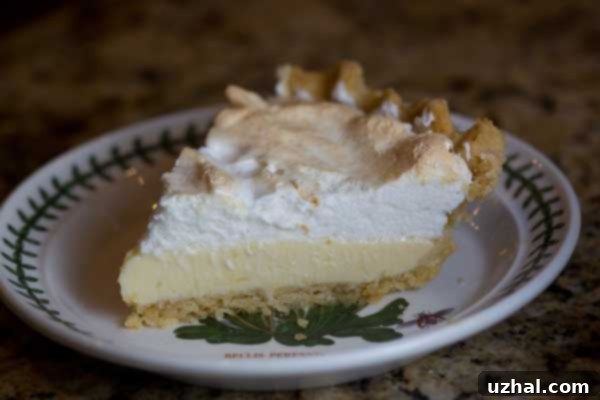
Ruth’s Grandma’s Pie Crust: A Tried-and-True Family Favorite
When it comes to all-shortening pie crusts, Ruth’s Grandma’s Pie Crust, a cherished recipe from Allrecipes.com, stands out as a clear winner. This recipe is a testament to how simple ingredients can yield truly spectacular results. What sets it apart is the inclusion of an egg, which plays a pivotal role. The egg acts as a binder, making the dough exceptionally easy to work with – it rolls out beautifully without tearing or sticking, a common frustration for many bakers. Beyond its workability, the egg also contributes to the crust’s tenderness and adds a subtle richness. For an enhanced flavor profile, I highly recommend using a combination of butter-flavored shortening and regular shortening. The butter-flavored variety imparts a hint of buttery taste without compromising the superior flakiness that only shortening can provide, while the regular shortening ensures that classic, delicate texture. This balance makes Ruth’s Grandma’s Pie Crust a joy to bake with and a delight to eat.
While other all-shortening options exist, such as the basic Crisco pie crust found on the Crisco website, Ruth’s Grandma’s recipe edges it out for a couple of key reasons. It generally proves to be a little easier to roll out, offering more forgiveness for beginners. Furthermore, the recipe yields a generous amount of dough, making it perfect for double-crust pies or for when you need a bit extra for decorative edges. Its consistent performance and delicious outcome make it my top recommendation in the all-shortening category for anyone seeking a wonderfully flaky and hassle-free pie crust.
Choosing the Right Crust for Your Pie
With several excellent options available, how do you decide which pie crust recipe is best for your specific pie? Here’s a quick guide:
- For Fruit Pies (double-crust): Butter & Shortening Combo Crusts (like the Baked Flaky Pie Crust or Basic Unbaked Crust) are ideal. They offer excellent flavor from butter and the stability and flakiness from shortening to hold up to juicy fillings. An All-Shortening crust can also work wonderfully here for maximum flakiness.
- For Custard Pies (pumpkin, pecan, quiche): A pre-baked (blind-baked) crust is almost always necessary to prevent a soggy bottom. The Baked Flaky Pie Crust (combo) or the 1-2-3 Butter Crust (all-butter) are fantastic choices as they hold their shape well during blind baking. Avoid the European All-Butter Crust here.
- For Tarts and Galettes: An All-Butter crust, particularly the 1-2-3 Butter Crust, is often preferred. The rich, pure butter flavor truly shines in these single-crust applications where the crust is a prominent feature. Their slightly crisper texture also complements the often lighter fillings.
- For Cream Pies (chocolate cream, coconut cream): A blind-baked crust is essential. A Butter & Shortening Combo Crust or an All-Shortening Crust provides a sturdy, flaky base that stands up well to creamy fillings.
- For Savory Pies (pot pies): A combo crust or an all-shortening crust works well, offering a robust texture that pairs nicely with savory ingredients.
Troubleshooting Common Pie Crust Problems
Even with the best recipes, pie crust can sometimes be finicky. Here are solutions to common issues:
- Tough Crust: Almost always due to overworking the dough, which develops gluten. Handle the dough minimally and ensure it rests adequately. Too much water can also contribute to toughness.
- Crumbly Dough: Too little liquid is usually the culprit. Add ice water a teaspoon at a time until the dough just comes together. It can also happen if the fat isn’t properly incorporated or if the dough is too warm.
- Shrinking Crust: Insufficient resting time is the main cause. The gluten hasn’t relaxed, so it contracts when baked. Always chill your dough for at least 30 minutes, and again after lining the pan. Gently ease the dough into the pan without stretching.
- Soggy Bottom: Often a problem with wet fillings or insufficient blind baking. For custard pies, blind bake thoroughly until golden. Brush the bottom crust with an egg white wash or a thin layer of melted butter before filling to create a barrier. Bake on a hot baking sheet to help cook the bottom faster.
- Dry or Brittle Edges: Too much flour on the rolling surface, over-baking, or too little fat can cause this. Avoid excessive flour, and consider covering the edges with foil halfway through baking.
Conclusion: Embrace the Joy of Homemade Pie Crust
Making homemade pie crust might seem daunting at first, but with these reliable recipes and a few foundational techniques, you’ll be creating stunning and delicious pies in no time. Each type of fat—butter, shortening, or a combination—brings its own unique qualities to the table, allowing you to tailor your crust to perfectly complement your chosen filling.
Don’t be afraid to experiment! Try different recipes, observe how slight variations in technique affect the outcome, and discover what works best for you and your baking environment. The reward of a perfectly flaky, tender, and flavorful homemade pie crust is immense, transforming a simple dessert into a memorable culinary experience. So grab your apron, chill your ingredients, and get ready to master the art of the perfect pie crust!
